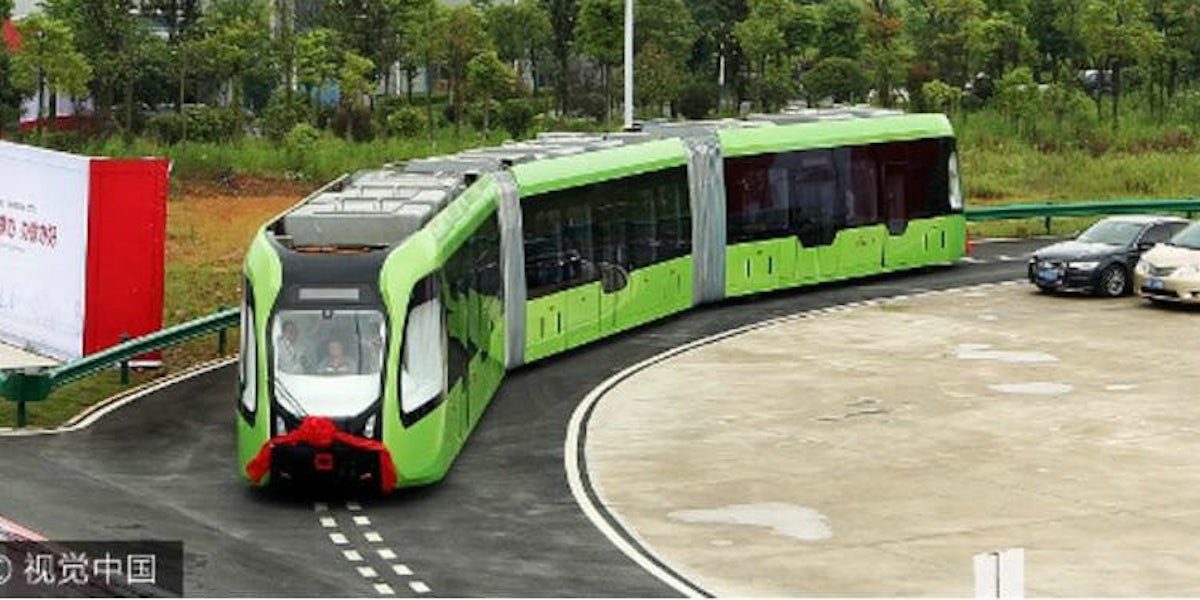Trains are a high-speed and dependable form of public transportation, but their huge upfront costs, like spending millions laying down a single mile of track, often discourage cities and private entities to invest. Fortunately, a Chinese company has found a way to significantly reduce the cost of “railway” infrastructure using sensors and paint.
The Chinese rail transit firm CRRC calls it Autonomous Rail Transit (ART), or a “smart bus,” but it’s really more like a hybrid between a train, tram, and bus. Like a tram, the smart bus is meant for inner-city travel, but it is train-like in that its modular design allows for carriages to be added on or removed. It’s like a bus, because, well, it drives on the road.
The best part? It’s fully autonomous. Using a series of sensors and some clever software, the smart bus is able to follow a preset path marked by a trail of white lines similar to the ordinary dash marks you see on most roadways.
“It is like having a virtual rail for the bus,” said Feng Jianghua, chief engineer of CRRC.
At 30 yards long, the smart bus is capable of transporting up to 307 passengers in three carriages at a top speed of around 43 miles per hour. It can travel 25 kilometers after just 10 minutes of charging.
Its biggest advantage is the cost. An ordinary subway in China costs anywhere from $58 million to $103 million per kilometer, according to China Daily. By contrast, it only costs CRRC around $2.2 million dollars to make a kilometer of track for its road train.
The world’s first smart bus will be operational in downtown Zhuzhou City, China by 2018 on a four-mile route.
H/T Mashable
